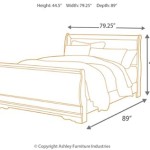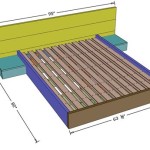Can Bed Bugs Get Out of Plastic Bags?
Bed bugs are small, parasitic insects that feed on human blood. They are known for their ability to hide in cracks and crevices and can be difficult to eliminate. One common question is whether bed bugs can escape from plastic bags. The answer is not entirely straightforward, as it depends on several factors, including the type of bag, its condition, and the behavior of the bed bugs themselves.
The Nature of Plastic Bags
Plastic bags are often seen as a temporary solution for containing bed bugs. The materials used in these bags can vary significantly. Some bags are thin and flimsy, while others are thicker and more robust. The thickness and material of the plastic can influence whether bed bugs can escape. Thinner bags may be easier for bed bugs to chew through, especially if they are desperate or if they are given enough time. However, even thicker plastic bags, while more resistant, are not entirely impervious to bed bugs. In some cases, bed bugs might be able to squeeze through small tears or holes in the bag, especially if the bag is damaged, worn, or improperly sealed.
Bed Bug Behavior and Survival Instincts
Bed bugs are incredibly resilient creatures. They have an uncanny ability to squeeze through tiny openings and can survive for extended periods without food or water. If trapped in a plastic bag, they might try various methods to escape. Some may attempt to chew through the plastic, while others may try to squeeze through small openings or gaps. However, their success in escaping depends on the type of plastic bag and its condition.
Additionally, bed bugs are drawn to warmth and carbon dioxide, which are both present in human habitats. If a bed bug is trapped in a plastic bag and detects these signals, it might be more motivated to escape, increasing its chances of finding a way out.
Factors Influencing Bed Bug Escape
Several factors contribute to the likelihood of bed bugs escaping from plastic bags. These factors include:
1. Type of Plastic Bag:
The type of plastic bag used plays a crucial role in determining the potential for bed bug escape. For instance, thin, flimsy bags made from low-density polyethylene (LDPE) are more susceptible to being chewed through by bed bugs. However, thicker bags made from high-density polyethylene (HDPE) are generally more robust and less likely to be compromised by bed bug attempts to chew through them.
2. Condition of the Plastic Bag:
The condition of the plastic bag is another significant factor. Even thick, sturdy bags can be compromised by damage, tears, or holes. Bed bugs can exploit these weaknesses to escape. Additionally, older, worn-out bags are more likely to be susceptible to bed bug escape attempts due to their weakened material and potential for small tears.
3. Number of Bed Bugs:
The number of bed bugs trapped in the bag also influences the likelihood of escape. A larger number of bed bugs might create more pressure on the bag, increasing the chances of finding and exploiting weaknesses in its structure, particularly if the bag is not large enough to accommodate them comfortably.
4. Environmental Conditions:
Environmental conditions, such as temperature and humidity, can also influence bed bug escape. Bed bugs are more active in warmer temperatures and may be more likely to attempt to escape from a bag in a warm environment. Similarly, high humidity can make the plastic more pliable, making it easier for bed bugs to chew through or squeeze through small openings.
5. Time Spent in the Bag:
The length of time bed bugs spend in the bag is another factor. The longer they are trapped, the more motivated they may be to escape, leading to increased efforts and persistence in finding a way out. However, prolonged confinement can also weaken bed bugs and reduce their ability to chew through plastic.
While plastic bags can be used to temporarily contain bed bugs, they are not a foolproof solution. It is vital to consider the factors discussed above to assess the risk of bed bugs escaping from plastic bags.

How Long Do Bed Bugs Live In A Plastic Bag Killing Using The Pest Informer

How Long Do Bed Bugs Live In A Plastic Bag Abc Blog

Can Bed Bugs Climb Plastic

What To Do If You Find A Bed Bug In Your Clothes

Bed Bugs 101 In Public Spaces

Bed Bug Prevention And Control In The Home Umn Extension

How Long Do Bed Bugs Live Mcdonald Pest Control

Get Rid Of Bugs And Crawling Insects Fast Easy Everyday Skate

How To Get Rid Of Bed Bugs While Traveling Destinationless Travel

Bed Bug Fact Sheet
Related Posts







